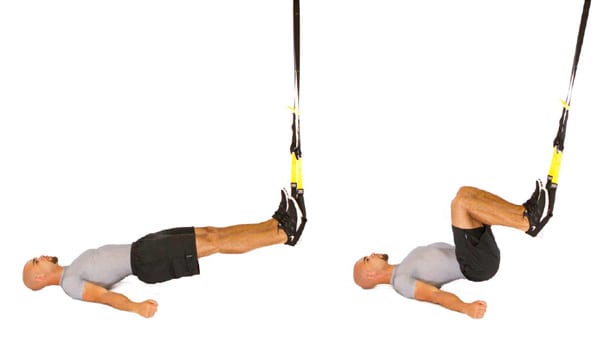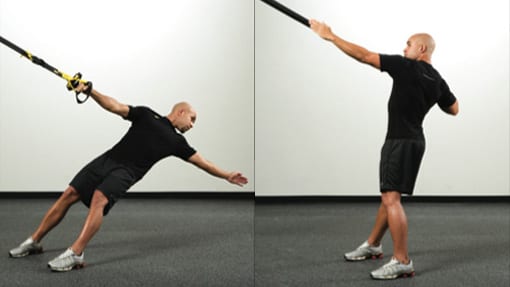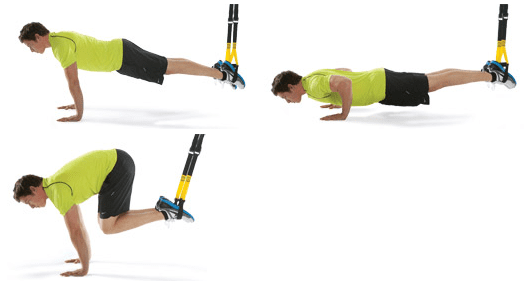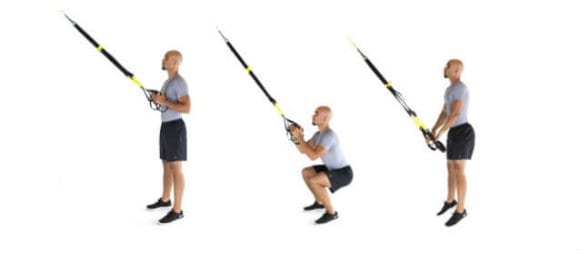By the healthiergang writer Gabriele Galasso, Functional Training instructor and K1 competitive athlete.
Suspension training
Suspension training is one of the methods (but not the only one) that can simulate conditions of precarious balance during training. Suspension training, performed with what is commercially known as TRX (there are many valid variants much cheaper and equally well built).
Without going too far into the explanation of this methodology, which was extensively covered in a previous article, we want to deal specifically with the execution of 4 of the most effective exercises for the stability of a fighter.
Combat Sports
Combat sports are a prime example of situation sports: every movement is dictated by a precise strategy, but also by constant variations in position with respect to the opponent and the ring.
In fact it is almost never possible to carry out predetermined movements, but you always have to "sew" these movements onto the situation: let's take for example a simple combination of 3 straight blows, which we would ideally like to pull while advancing, and suppose that instead of moving back, the opponent tries to come out sideways with a pin.
It is obvious that in order to find ourselves again in front of the opponent, we will also be forced to perform a rotation, which was not foreseen, but which the situation forces me to do.
We assume that, in all combat sports, a stable stance is essential for the execution of powerful strikes.
The maximum expression of the power of a punch, a kick or a knee is closely linked to the way we transmit the force from the feet to the hip extensor chain (for a kick) or to the torsion of the torso (for a punch). , for this reason it is essential to be able to maintain a solid position despite the dynamism of a match.
Exercises
1. Front kick hip press
One of the best suspension training exercises is definitely the Front kick hip press.
1. This is an exercise that involves a variation of the classic hip press, simulating a front kick and working on hip extension and stability during execution.
2. Adjust the instrument so that the stirrups are as far from the ground as the length of the athlete's femur, or a few centimeters more, then block any sliding of the two handles in order to work with only one in an optimal manner.
3. Lie supine with one heel inside the stirrup so that the femur and tibia are perpendicular, with the tibia parallel to the ground. In this position, therefore, we remain with one foot resting on the instrument and the other free but kept at the same angle.
4. Keeping the arms inclined by about 30 ° with respect to the torso, adduct the shoulder blades well and extend the hip explosively as if to repeat the movement of the front kick: consequently most of the thrust will have the heel bound to the instrument as an unstable support. , while the other leg has to stretch out simulating a real kick to the ceiling.
5. Return to the starting position and repeat for the agreed series.

2. Pull and press
1. Exercise articulated enough to move from a pulling movement to a pushing movement passing through the rotation of the torso.
2. Adjust the trx so as to block the sliding of the handles and to be able to use only one.
3. Grasp the handle with both hands and assume a supine starting position, resting only on the feet (open like the shoulders) and leaning just enough to be able to work in a training way (adjust the inclination of the torso after a few runs test).
4. Keeping the buttocks and abdomen contracted, perform a pulling movement, bringing the hands towards the breastbone with the elbows close to the body.
5. Stabilizing the position of the hands, perform a pivot (rotation) on the feet, transmitting the force to the torso and extending the arms in front of the body, bringing us to the prone position. It is important to maintain the tension of the instrument belt, which must never be slow.
6. Retrace the movement backwards, bringing the abdomen back towards the ceiling.
7. Perform as many repetitions as agreed in the series, remembering to train the rotation in both directions.

3. Lateral knee2chest
Useful exercise for training the abdomen in dynamic conditions
1. Adjust the brackets to about 30/35 cm from the ground
2. The starting position is that of the classic knee2chest with the support of the hands on the ground and the feet inside the stirrups of the instrument, abdomen and buttocks always active to avoid arching.
3. From a fully extended position, gather the knees to the chest while inhaling and extend them laterally while exhaling, thus finding themselves inclined by about 45 ° with respect to the starting position (the contraction during the extension, and therefore the exhalation, is fundamental).
4. Given the instability of the lateral position that it is not possible to maintain, immediately raise the legs to the chest and extend them in the opposite direction thus describing an angle of 90 ° (+ 45 ° and -45 ° with respect to the central position).
5. Complete the agreed repetitions.

4. Jump squat
The last exercise in suspension training is the jump squat.
Exercise particularly dedicated to the lower part with an excellent contribution of cardio.
1. Adjust the trx to about 45cm from the ground
2. Grasp the handles with your hands and position yourself far enough away to keep the straps in tension
3. Assume the starting position of the squat.
4. Do a maximum squat and ascend explosively by jumping as much as possible.
5. In the ascent phase, extend your arms towards the floor to maintain the tension of the instrument.
6. Perform the agreed repetitions.

Training Proposal
Perform 4 tabata separated by 2 minutes of rest ie.
- Front kick hip press: 20 '' work 10 '' rest x 8 times (4 right and 4 left)
- Pull and press: 20 '' work 10 '' rest x 8 times (4 right and 4 left)
- Lateral knee2chest: 20’’ work 10’’ rest x 8 volte
- Squat jump: 20’’ work 10’’ rest x 8 volte
Our articles should be used for informational and educational purposes only and are not intended to be taken as medical advice. If you are concerned, consult a health professional before taking dietary supplements or making major changes to your diet.


























